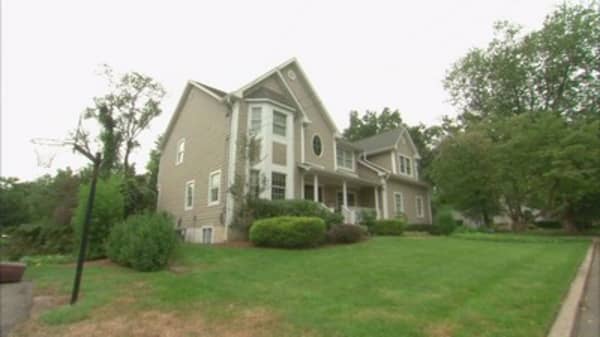But the GSE Act of 1992 set aggressive targets for them to purchase loans originated to borrowers at or below the median income level – many of whom were "subprime." To meet the goals, the GSEs lowered underwriting standards for mortgages they purchased from originators, who before had little incentive to originate poorly underwritten loans, Wallison explains.
Because of the GSEs' large market share, low- and moderate-income level lending targets – first set at 30 percent – had immediate nation-wide impact: in 1989 just 7 percent of mortgages were made with a down payment below 10 percent, but by 1994, the share of low down payment mortgages had grown to 29 percent. The Department of Housing and Urban Development steadily increased the targets to 55 percent through 2007, causing underwriting standards to concurrently fall along the way. By 2007, two in five loans acquired by the GSEs were made with down payments below 3 percent.
Competition for market share between the GSEs and the Federal Housing Administration – which offers federally-backed mortgage insurance to enable low down payment lending to low-income and first-time home buyers – further accelerated the nation-wide decline in underwriting standards.
This increased the number of prospective home buyers and thus demand for homes, creating a housing price and construction bubble that spanned 1997 through 2007 and dwarfed the largest of all previous such bubbles by a multiple of nine. When the bubble popped, low- and middle-income American families were hit the hardest.
In a 2010 CNBC interview then-Representative Barney Frank expressed hope for substantial GSE reform: "I hope by next year we'll have abolished Fannie and Freddie…it was a great mistake to push lower-income people into housing they couldn't afford and couldn't really handle once they had it."
Yet today, the GSEs remain in federal conservatorship almost a decade after the crisis as a "temporary" federal takeover continues, leaving taxpayers on the hook for $5 trillion of risk.
As U.S. Senators Mark Warner (D-VA) and Bob Corker (R-TN) again undertake work on legislation to overhaul the housing finance industry, they should turn to House Financial Services Committee Chairman Jeb Hensarling's 2014 Protecting American Taxpayers and Homeowners Act for a road map on how to appropriately wind down the too-big-to-fail GSEs and end U.S. housing policies behind the last subprime mortgage boom – and its tragic bust.
Simply setting up a new government agency that mimics the GSEs' habit of pursuing so-called affordable housing targets, while leaving taxpayers on the hook for losses, is unacceptable. Destabilizing housing policies that brought about the crisis must end, along with Fannie and Freddie.
Congress should certainly maintain its focus on undoing the economic havoc caused by Dodd-Frank. But, as Peter Wallison so effectively pointed out, it must not lose sight of the need to address Dodd-Frank's biggest omission – Fannie and Freddie.
The threat to our financial system remains, and until Congress winds down the GSEs and ends the federal government's destabilizing role in U.S. mortgage finance, efforts to improve U.S. financial market stability will be met with only limited success.
Commentary by Paul Atkins, Patomak Global Partners CEO. He is a former SEC commissioner and was a member of President Donald Trump's transition team. He is currently serving on the president's strategic forum.
For more insight from CNBC contributors, follow
@CNBCopinion
on Twitter.




